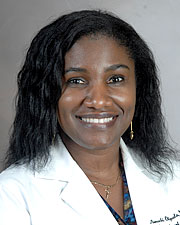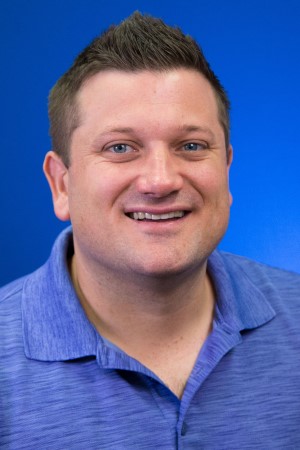

The Stroke Prevention Program's Research department is a pioneering center dedicated to advancing our understanding of stroke and developing effective strategies for prevention. Areas of interest also include stroke disparities, and health services. Welcome to a space where innovation meets compassion, and together, we strive to make a lasting impact on stroke prevention worldwide.
Stroke is a preventable disease with devastating consequences. The risk of stroke can be decreased by addressing and controlling risk factors. Risk factors are medical conditions or lifestyle practices that can increase one's chance of having a stroke.
The Stroke Prevention Program addresses the concerns patients, families and health professionals may have and provides resources and services to control risk factors. The program is directed by Dr. Anjail Sharrief, Associate Professor of Neurology and the Director of Stroke Prevention for the Institute of Stroke and Cerebrovascular Disease.
Prevention


Stroke Clinic Nurse Practitioner
Community Outreach Organizer
UTHealth Houston

McGovern Medical School
Director of Stroke Prevention, Institute for Stroke and Cerebrovascular Disease at UTHealth Houston

-
SleepSMART
Sleep for Stroke Management and Recovery Trial
The primary goals of this study are to determine whether treatment of obstructive sleep apnea (OSA) with positive airway pressure starting shortly after acute ischemic stroke or high risk TIA (1) reduces recurrent stroke, acute coronary syndrome, and all-cause mortality during 6 months after the event, and (2) improves stroke outcomes at 3 months in patients who experienced an ischemic stroke.
Prior studies have shown a clear independent association between OSA, which has a prevalence similar to hypertension among stroke patients, and development of stroke and poor outcomes after ischemic stroke. If the Sleep SMART hypotheses are confirmed, a new strategy to prevent stroke recurrence and improve stroke recovery will be available.
To learn more about this trial, please fill out this short online form »
-
VIRTUAL
Video-based Intervention to Reduce Treatment and Outcome Disparities in Adults Living with Stroke or TIA
This randomized trial strives to provide care over telehealth channels with remote blood pressure monitoring. Patients are asked to check blood pressure daily and also meet with their outpatient stroke provider at designated times either in person or through video visits. Benefits include a free blood pressure monitor and enhanced post-stroke blood pressure monitoring that is not typically provided to stroke patients.
To learn more about this trial, please fill out this short online form »
Education and Training
Stroke Prevention Fellowship
The one year Stroke Prevention Fellowship is directed by Dr. Anjail Sharrief. The fellowship program focuses on giving physicians exposure and training in primary and secondary stroke prevention through risk factor management and stroke complication management. Fellows will be trained to provide patient-care and comprehensive preventive care.
Vascular Neurology Fellowship Training
We provide a one or two-year vascular neurology fellowship, both fostering the development of leaders in stroke field, be it in research, education, administration, quality improvement, and/or community outreach.
Medical Student and Public Health Student Opportunities
More information coming soon about our opportunities and resources available to medical students and public health students.
Publications
Dr. Anjail Sharrief's PubMed publications can be found here.
Racism and Stroke
Dr. Sharrief has recently coauthored an American Heart Association Presidential Advisory major publication addressing structural racism and health disparity in the US. Read more.
Discover how a stroke happens through a clear, easy-to-follow animated video that brings the science to life. In just moments, you’ll see how blood flow to the brain can become blocked and why acting fast is critical. Whether you're learning for yourself or a loved one, this visual explanation helps make stroke prevention and awareness more understandable—and more urgent. Watch and take the first step toward protecting your brain health.

